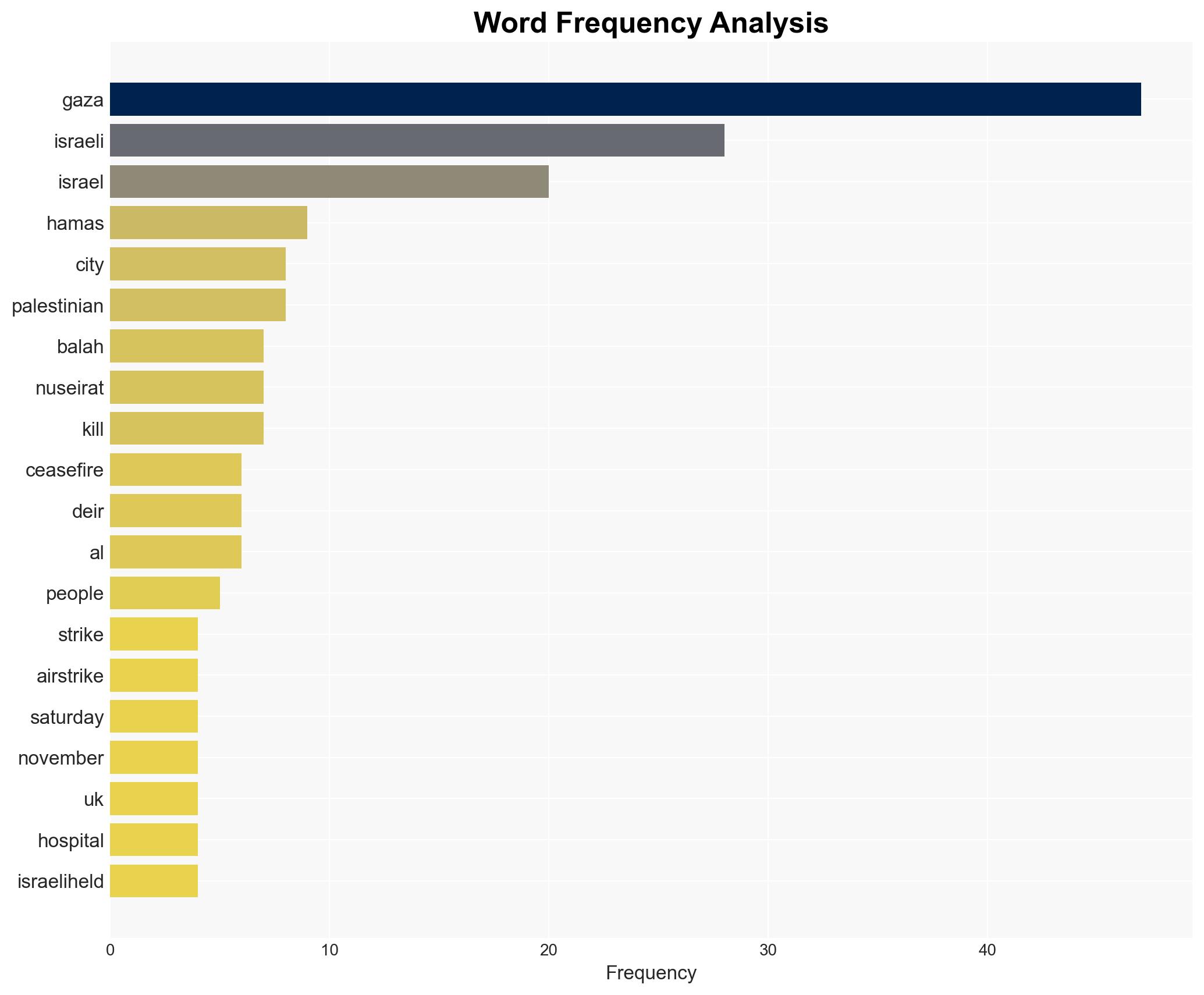Israel launches strikes on Gaza in further test of fragile ceasefire
Published on: 2025-11-22
AI-powered OSINT brief from verified open sources. Automated NLP signal extraction with human verification. See our Methodology and Why WorldWideWatchers.
Intelligence Report:
1. BLUF (Bottom Line Up Front)
The most supported hypothesis is that the Israeli airstrikes on Gaza are a strategic move to pressure Hamas and test the limits of the current ceasefire agreement. The confidence level in this assessment is moderate due to the complexity of the geopolitical dynamics and the potential for misinformation. Recommended actions include diplomatic engagement to reinforce ceasefire terms and intelligence gathering to monitor potential escalations.
2. Competing Hypotheses
Hypothesis 1: The Israeli airstrikes are a deliberate strategy to test the ceasefire’s resilience and to pressure Hamas into compliance with broader security demands.
Hypothesis 2: The airstrikes are a reactive measure to specific threats or provocations perceived by Israel, such as alleged terrorist activities or violations of the ceasefire by Hamas.
Hypothesis 1 is more likely given the timing of the strikes and the strategic importance of demonstrating military readiness and deterrence. However, Hypothesis 2 cannot be entirely discounted due to the ongoing security concerns and historical patterns of conflict escalation.
3. Key Assumptions and Red Flags
Assumptions include the belief that both parties are motivated to maintain the ceasefire, despite provocations. There is a risk of bias in interpreting actions as solely aggressive or defensive without considering broader strategic objectives. Red flags include the potential for misinformation or propaganda from both Israeli and Palestinian sources, which could skew perceptions and responses.
4. Implications and Strategic Risks
The continuation of airstrikes risks escalating into a broader conflict, potentially drawing in regional actors and destabilizing the already fragile geopolitical landscape. Politically, this could undermine peace negotiations and international diplomatic efforts. Economically, prolonged conflict could disrupt regional trade and humanitarian aid flows. Informationally, both sides may engage in propaganda campaigns to sway international opinion, complicating diplomatic resolutions.
5. Recommendations and Outlook
- Engage in diplomatic dialogues to reinforce the ceasefire terms and address underlying security concerns.
- Enhance intelligence operations to monitor potential threats and provocations that could escalate tensions.
- Best-case scenario: Ceasefire holds, and diplomatic channels lead to a reduction in hostilities.
- Worst-case scenario: Escalation into a full-scale conflict involving regional actors.
- Most-likely scenario: Continued sporadic violence with intermittent diplomatic interventions.
6. Key Individuals and Entities
Key entities include the Israeli military, Hamas leadership, and local health authorities in Gaza. Specific individuals are not mentioned in the source text.
7. Thematic Tags
Regional Focus, Regional Focus: Middle East, Israel, Gaza
Structured Analytic Techniques Applied
- Causal Layered Analysis (CLA): Analyze events across surface happenings, systems, worldviews, and myths.
- Cross-Impact Simulation: Model ripple effects across neighboring states, conflicts, or economic dependencies.
- Scenario Generation: Explore divergent futures under varying assumptions to identify plausible paths.
Explore more:
Regional Focus Briefs ·
Daily Summary ·
Support us





